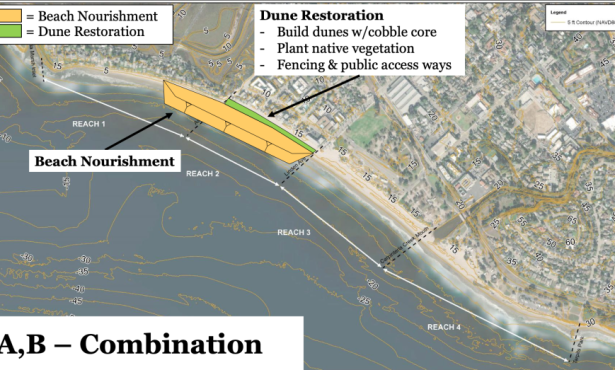California Coastal Commission Urged to Protect Coast from Offshore Fracking
New Research Reveals 12 Recent Frack Jobs on Oil Wells in State Waters; Conservationists Call for Investigation, Moratorium
At least a dozen offshore oil wells in California state waters have been fracked in the past three years, apparently without legally mandated review under the California Environmental Quality Act, according to new research. This new revelation doubles the number of known offshore frack jobs, putting additional pressure on the California Coastal Commission to take strong action to control offshore fracking when it meets Thursday in Santa Cruz.
In a joint letter to the Coastal Commission, the Center for Biological Diversity, Environmental Defense Center and Surfrider Foundation urge commissioners to launch an investigation into the use of the controversial process in California waters. The letter also cites records showing that offshore fracking in California employs dangerous substances, including 2-Butoxyethanol, methanol and other cancer-causing chemicals.
“Offshore fracking poses a deadly threat to California’s fragile marine environment,” said Miyoko Sakashita, the Center for Biological Diversity’s oceans program director. “This dangerous practice is being used in our oceans with very little government knowledge or oversight. The best way for the Coastal Commission to protect our water and wildlife is to call an immediate time-out on offshore fracking.”
“Environmental groups are calling on the California Coastal Commission to exercise its oversight and protect our coast from the harmful practice of fracking,” announced Brian Segee, staff attorney for the Environmental Defense Center. The Environmental Defense Center submitted a Freedom of Information Act request to the federal government, which revealed numerous previously undisclosed fracking operations taking place on offshore oil and gas platforms. “The state and the public need to know about fracking before it occurs, and have an opportunity to voice their concerns,” said Segee. Segee noted that “the Coastal Commission has the right to review, and even object to, proposals to frack offshore if such operations may harm state coastal resources.”
“It’s utterly baffling that fracking has occurred in state and federal waters without regulators being aware,” said Stefanie Sekich-Quinn, policy manager for the Surfrider Foundation. “What’s even more inexcusable is that some fracking fluids were discharged directly into the ocean without any scientific understanding of how these chemicals impact ocean ecosystems,” said Sekich. “Government officials are asleep at the wheel, and it’s time for them to wake up and uphold laws that protect our ocean and coasts.”
Fracking involves blasting massive amounts of water and industrial chemicals, mixed with sand, into the earth at pressures high enough to crack apart geologic formations and release oil and gas.
Revelations about fracking in state waters, which are drawn from the Center for Biological Diversity’s analysis of state records and the industry website FracFocus.org, show that fracking off California’s coast is growing. Earlier this month, the Environmental Defense Center and journalists broke the story that oil companies have fracked at least 12 offshore wells in federal waters in the Santa Barbara Channel, where a 1969 oil spill polluted California’s ocean and beaches with millions of gallons of oil.
California oil and gas officials don’t yet regulate or even track fracking — onshore or offshore — in spite of its links to water and air pollution in other states. Federal officials who oversee oil production in federal waters are relying on outdated environmental analyses that do not consider the dangers of new fracking techniques. Federal officials can’t even say how often fracking has happened in California’s coastal waters.
During offshore fracking, a significant amount of fracking fluid returns to the surface and is either discharged into the ocean or transported for onshore ground injection. At sea, these chemicals enter the marine ecosystem.
Water contamination is a particular hazard with fracking because hundreds of toxic chemicals are used in fracking fluid. One scientific study found that 25 percent of fracking chemicals could cause cancer and mutations. While fracking’s harm to wildlife has received less study, the chemicals it uses clearly pose a threat to California’s marine life.
“What’s truly scary is how little government officials seem to know about offshore fracking,” Sakashita said. “No one at the state or federal level really has a handle on where this risky process is being used or what dangerous chemicals are being pumped into our oceans. But we do know that offshore fracking increases California’s risk of a devastating oil spill or release of toxic fracking fluid.”


